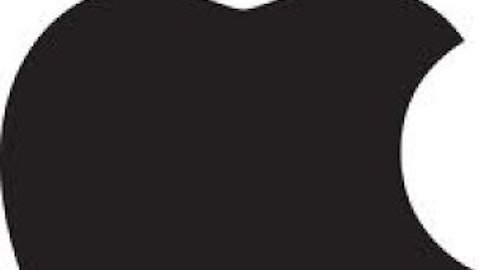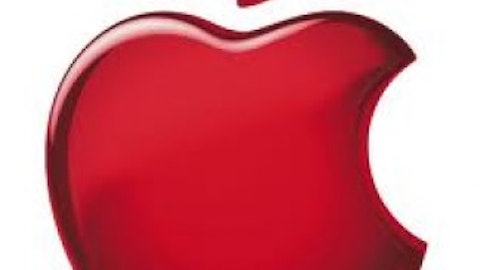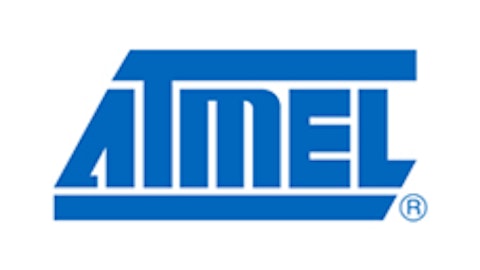Apple Inc. (NASDAQ:AAPL) transformed from a high-growth explosive company to a mature one with more stable earnings and cash flows. While investors wait for Apple’s new innovative products and/or refresh of its current product-line, investors should hold onto the company’s stock. Apple’s healthy dividend yield of more than 2.8% and a massive share repurchase program will drive upside for the company in the near-to-medium term.
Higher unit sales at lower prices
Apple Inc. (NASDAQ:AAPL)’s top line revenues for 3Q-FY2013 stood relatively flat on a Y/Y and came in at $35.3 billion, and the company’s net profit came in at $6.9 billion, which implies a net profit margin of roughly 19.5%. Owing to a massive share repurchase conducted during the quarter the company’s diluted EPS grew to $7.47. Inclusive of dividends and buybacks the company returned more than $18.8 billion to shareholders during the quarter. Apple’s operating cash flow for 3Q13 was robust at roughly $7.8 billion.
However, the company has been slashing the prices of a number of its older generation iPhones which lead to a decrease in its margins. In 3Q13, the company’s gross margin trickled down to 36.9%, which is a pretty hefty decrease from the gross margin number of 42.8% in the year ago quarter.
Apple Inc. (NASDAQ:AAPL) sold a record number of iPhones in the June quarter, which stood at 31.2 million units. Apple’s iPhone 5 has been the most widely sold iPhone, but the company has been selling a lot more iPhone 4 and 4s units as well. At the end of F3Q13 there was more than 11 million iPhones in Apple’s channel inventory.

iPads sales declining; PC Market continues to shrink
And the company sold roughly 14.6 million iPads, which is a Y/Y decline from 17 million units. Apple Inc. (NASDAQ:AAPL)’s revenues from the iPad segment declined 30% Y/Y to $6.4 billion. Businesses and schools have adopted the iPad across numerous regions of the world. Of the iPad unit sales, 1.1 million were fuelled by the company’s U.S. educational institute business which spurred strong sales of Macs as well.
The company’s Mac units sales for the quarter stood at 3.8 million Macs, represents a 7% Y/Y decline. The global PC market contracted by 11% in Q2 and the Mac managed to gain some share in the tough PC market, according to IDC. And in June-2013, Apple Inc. (NASDAQ:AAPL) launched newer versions of MacBook Air and was well received by customers.
iTunes & Services are growing
Apple Inc. (NASDAQ:AAPL)’s revenues from its services business and ecosystem saw a robust 35% Y/Y growth to $4 billion. In the services business, performance of iTunes was the key force with revenues for 3QF’13 standing at $2.4 billion, which represents a 29% Y/Y growth driven by strong content and app sales. Apple’s app ecosystem is thriving with more than 900,000 iOS apps including 375,000 optimized for the iPad. Driven by higher sales of the iPad Mini, the ASP of the iPad segment came down by roughly $13 to $436.
In the last quarter, Apple Inc. (NASDAQ:AAPL) opened 6 new retail stores and now has more than 408 retail across the globe of which 156 stores are outside the U.S. Apple’s retail segment was flat Y/Y and had revenues of $4.07 billion. The average revenue per store stood at $10.1 million which is a Y/Y decline from $11.1 million. And the company has plans to open up 9 new stores in 4QF’13.
Also, Apple Inc. (NASDAQ:AAPL) is facing more competition from other tablet manufacturers including Amazon.com, Inc. (NASDAQ:AMZN), Microsoft Corporation (NASDAQ:MSFT) and Google Inc (NASDAQ:GOOG). In particular, Google is making a strong push to ramp up its hardware sales which can pose a stronger threat for competing consumer electronics firms.
Google Inc (NASDAQ:GOOG)’s other revenue line item, which includes hardware revenues surged 138% Y/Y to $1.05 billion and its Motorola Mobility division saw an 18% Y/Y increase to $1.0 billion. Android has now captured ~80% market share of the global smartphone OS market, according to Strategy Analytics. Going forward, Google’s own hardware products including the Nexus offerings and Motorola’s products including the Moto X along with the global dominance of Android represent a triple threat for Apple Inc. (NASDAQ:AAPL). Android has already seen more than 900 million activations, and this number is expected to go up to 1 billion very soon, as more and more OEMs are selling lower priced handsets in the growing economies.
Can Apple be an Enterprise Play?
The iPhone has gained solid momentum in getting more business from Enterprise customers. The enhanced security and stability of iOS are appealing to more corporates and government customers in the U.S. and abroad. According to IDC estimates, iPhone holds 62.5% market share in the U.S. commercial market in the last quarter.
As more Enterprise and government agencies deploy iPhones on their network, the company should focus on enhancing its security. And the iPad represented more than 88% of tablet activations, and the company is adding more features on iCloud to provide a better user experience for Enterprise customers. And in the future, Apple Inc. (NASDAQ:AAPL) can earn more revenues from Enterprise clients by taking more market share away from Enterprise Players like BlackBerry Ltd (NASDAQ:BBRY). And also iOS’s biggest competitor Android is not the strongest in the Enterprise market due to the open source nature of Android makes it less secure.
Going Forward
Apple Inc. (NASDAQ:AAPL) has plans to launch iOS 7 in the fall with a number of new features and an enhanced user interface. In the future, Apple can earn incremental revenues from its iTunes and services business and from Enterprise clients. But these two revenue streams will not move the needle much for a company with such a big revenue base.
While the Apple Inc. (NASDAQ:AAPL) refreshes its current products, and unveils more game-changing innovations, the company’s upside will be driven by stable sales of current products, and by large share repurchases. Apple is more of a value stock, than a high-flying growth stock. Any substantial new product introductions from Apple that can create widespread consumer adoption will drive incremental upside for the company.
Ishfaque Faruk has no position in any stocks mentioned. The Motley Fool recommends Apple and Google. The Motley Fool owns shares of Apple and Google.
The article Apple: A Long-Term Buy? originally appeared on Fool.com.
Copyright © 1995 – 2013 The Motley Fool, LLC. All rights reserved. The Motley Fool has a disclosure policy.





